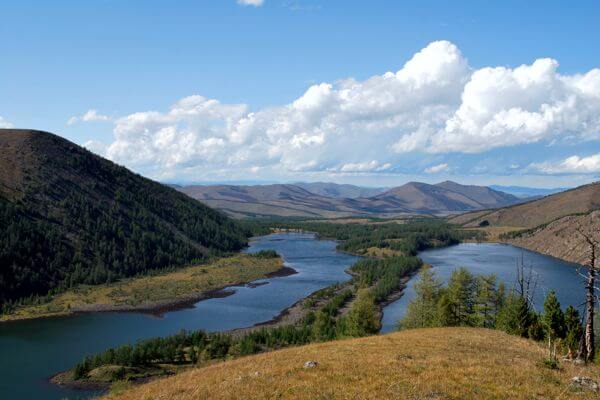Khuisiin Naiman Nuur Horsebackriding Tour
(14 days)
Detailed description

Karakorum
Today we will be driving to Karakorum (also called Kharkhorin).
Karakorum was the capital of Genghis Khan’s Mongolian Empire in the thirteenth century. In 1220, Genghis Khan ordered the building of Karakorum on the ruins of Turug and Uigur cities in the Orkhon valley at the eastern end of the Khangai Mountains. During the reign of Ugedei Khan, it was completed 15 years later. The town was very multicultural and culturally accepting.
The silver tree, which was once part of Möngke Khan’s palace, has become Karakorum’s emblem. From 1220 to 1260, it was at its most prosperous. Karakorum existed as the great capital of the Euro-Asian Empire, with Mongolia at its heart, and as the epicenter of politics, trade, culture, faith, intellect, and diplomacy, as well as the most visible link in international relations.
Between 1260 and 1380, Karakorum lost its status as the capital of the Great Mongolian Empire and became Mongolia’s capital. When Kublai Khan and his younger brother, Ariq Boke, assumed the throne of the Mongol Empire in 1260, they moved their capital to what is now Beijing. Karakorum was reduced to the administrative center of a Yuan Dynasty provincial backwater.
After 110 years after Kublai Khan transferred the Empire capital to China in 1260, the Mongolian Yuan Dynasty fell in 1368, and the center of Mongolian government was shifted to its homeland. It allowed Karakorum to regain its former glory.
The town was captured and destroyed by Ming troops under General Xu Da in 1388. Nothing remains of this legendary city today.
When Abtai Sain Khan and his brother, Lord Tumenkhen, went to the 3rd Dalai Lama in 1580 to express their desire to create a temple in Mongolia, he advised them to restore an old temple in Karakorum. The Main Zuu temple of Erdene Zuu monastery is a temple in Takhai ruins that was restored in 1588 at the Dalai Lama’s suggestion.
Erdene Zuu Monastery is now all that is left of what was once a massive monastery with 100 temples and over 1.000 lamas. You’ll walk around the grounds of Erdene Zuu Monastery, which is encircled by huge 400 m X 400 m walls. You will be guided around the 3 remaining temples: the Dalai Lama, Zuu of Buddha and Lavrin Temple.
The Karakorum Archaeological Museum will be another stop on your itinerary. It’s a tiny museum, but it’s housed in a new, well-run structure with good lighting and simple English labels on display cases. The displays contain hundreds of artefacts from the 13th and 14th centuries that were discovered in the immediate region, as well as those from other provinces’ archaeological sites, including prehistoric stone tools. Pottery, bronzes, coins, religious sculptures, and stone inscriptions are among the objects on display. A half-excavated kiln is also sunk into the museum floor. The scale model of ancient Karakorum, which attempts to reflect the city as it would have existed in the 1250s and is based on descriptions written by the French missionary William of Rubruck, is perhaps the most intriguing. A Turkic noble tomb with wall paintings and artefacts, including gold objects and jewels, is on display in another chamber. A short video of the actual burial site is available.
You can also visit the Turtle Rock and the Phallic Rock, as well as a small market that showcases local artists’ work.
(Ger camp L, D)




Orkhon Valley and Waterfalls
After breakfast at the ger camp, we’ll head west into the Orkhon Valley, where the Orkhon River flows. The foothills of the Khangai mountain range cover the Orkhon valley.
Our lunch will be served at our host family’s home, which is close to the Orkhon Waterfalls, which cascade down a basalt canyon to a depth of 20 meters. We’ll have plenty of time after lunch to explore the waterfall, its gorge, and the surrounding area. This is where we will leave our vehicles behind and load our gear and food on pack horses. Tomorrow we will set off for a ten-day ride in Khangai Mountains. Our translator will help us to forge contact with the local population.
(Family stay B, L, D)


Boorog Camp site
We will leave the Orkhon Waterfalls and start the horse riding stream upwards along the Bituu River until we go through a pass that leads us to the Eight Lakes valley. This totally remote area was created by volcanic activities. It is locked between several extinct volcanoes and high mountain peaks. As its name says, the valley shelters a large number of small lakes, all interconnected by rivers. The lakes are supplied with fresh water running from the mountains.
(Tented Camp B, L, D)


Khuis Lake
The first lake we will reach is Khuis Lake. This lake is dotted with a large rock island. Our riding path becomes a mix of everything such as rocks, forests, bushes and mud, and it gets more adventurous. We only see few nomadic families at the end of today’s trekking. Our local horse guides might give us an opportunity to visit their remote neighbors’ home for short break.
(Tented Camp B, L, D)


Shireet, Bugat and Khaliun lakes
We will continue our horse riding towards the biggest one Shireet lake. On the way to Shireet lake, our riding takes us through several other smaller lakes. The Eight lakes valley is one of the most beautiful, untouched and picturesque places of Khangai Mountain range. You will enjoy hearing only nature, the stream going downward to the lakes and birds tweeting. One can feel deeply relaxed and refreshed. In the afternoon we will come back to the Khuis lake camp site and spend a night here.
(Tented Camp B, L, D)


Khokh Davaa mountain pass
Today our horse ride continuously takes us to the west-north of the Eight lakes region. We will pass big valleys that are rich in alpine forest with many little streams along the way. Even though it is not that far from the Eight lakes it requires some effort to pass big hills and forests.
(Tented Camp B, L, D)


Yol Khad Rock
In the morning we will be riding further westward of the eight lakes area. We will pass several mountain hills and small streams. Yol Khad (Vulture Rock) is a natural rock on the edge of the Tamchiin Khavtsal cliff.
(Tented Camp B, L, D)


Erkhet Khairkhan Mountain
Today’s horse riding will take us to the highest peak Erkhet Khairkhan (3535m) in the region, which is located not far from Tamchiin Khavtsal cliffs. You will see a comparatively different landscape rich with small rivers and mountain passes. Here, we might have a chance to observe wildlife. Later in the afternoon we will reach our camping spot where there is a local family of nomads.
(Tented camp B, L, D)


Tongorgyn Davaa Pass
Each day of horse riding is peaceful and relaxing. From now on, we will start going east-north of the mount Erkhet Khairkhan. We will be traveling in the same mountain range Khangai.
(Tented camp B, L, D)


Doloon Bulag
This riding is quite longer in distance and also worth traveling. The wind blows mildly and the birds tweet melodiously from the side forest. It makes horse riding more natural and meaningful.
(Tented camp B, L, D)


Ar Denj
We will continue our journey in a big volcanic rocky valley where there are several families living with their livestock. You will bear witness to awesome views of the lakes and volcanic craters. This is truly a sight that needs to be seen to be believed. It lies beyond the imagination.
(Tented camp B, L, D)


Orkhon Waterfall
Today our horse riding ends and we will be travelling back to our host family at the waterfall in the later afternoon. Compared to the past few days it is easier. We don’t go up and down but mostly follow the Orkhon River until we get to the waterfall. As we keep following the river, the number of herds and families come up more and more.
UNESCO has designated the valley as a world cultural heritage site because of ancient artifacts dating back to the early 6th century and even earlier. Moreover, the great Mongol empire expanded its capital Karakorum here from the 12th to 13th centuries. Furthermore, the pasture nomadic lifestyle has persisted, preserving both the historic and nomadic perspectives on life.
(Family stay B, L, D)


Khogno Khan Mountains
After a good night’s sleep, we’ll travel to the Khogno Khan Mountains. In the open steppes, the Khogno Khan Mountains are an impressive massif. The Elsen Tasarkhai Sand Dune is a 100-kilometer-long sand dune not far from here.
End the afternoon with a hike in the Khogno Khan Mountains, where we can walk up the mountain and take in the breathtaking views of the plains, sand dunes, and grasslands. We’ll also pay a visit to the charming Ovgon Monastery.
(Ger Camp B, L, D)


Drive to Ulaanbaatar
The time has come to leave this beautiful place and drive back to Ulaanbaatar, Mongolia’s capital. You can use your free afternoon to see as you fit. You could always go see lovely cultural show and admire the contortionists while watching colorful and rhythmic Mongolian dances.
(B, L)

INCLUDED
- Land transportation
- 2 night Ger camp stay
- 2 night family stay
- 9 night tented camp stay
- Meals 13B, 14L, 13D
- Tour guides
- Camping and kitchen equipment
-
National park entrance fees/Museum
and Monasteries entrance tickets - Horses to Ride & Pack Horses
NOT INCLUDED
- Hotel in Ulaanbaatar
- City touring
- Medical, trip insurance and evacuation costs
- Alcoholic and soft drinks
- International airport transfer